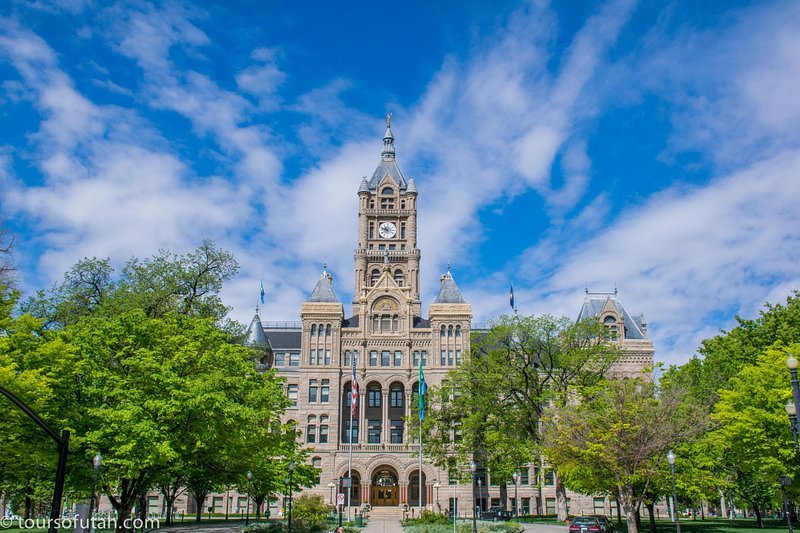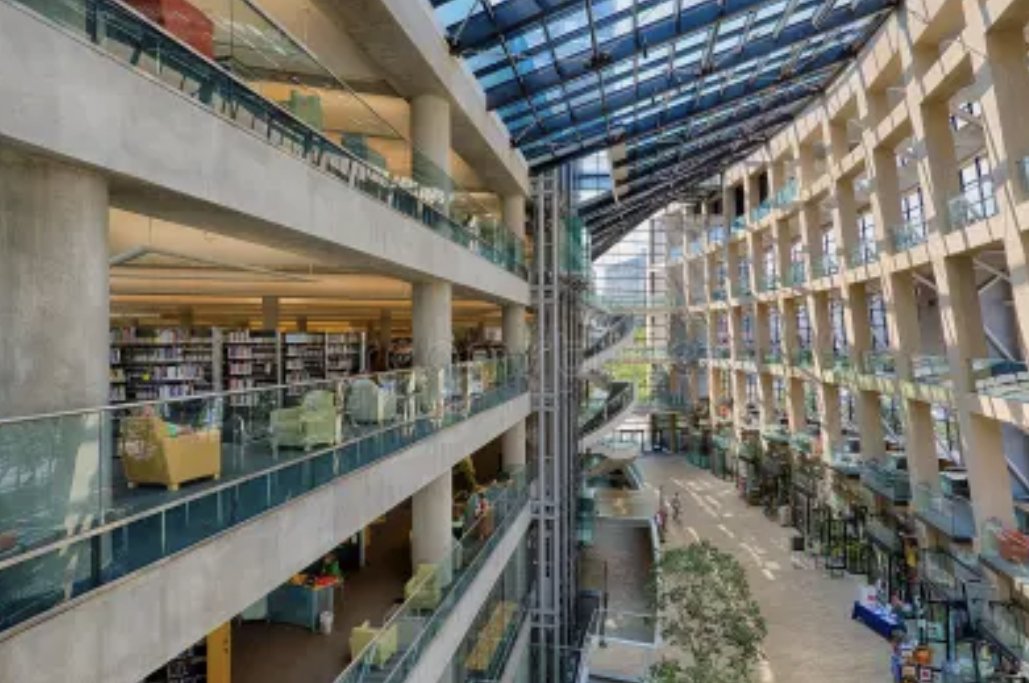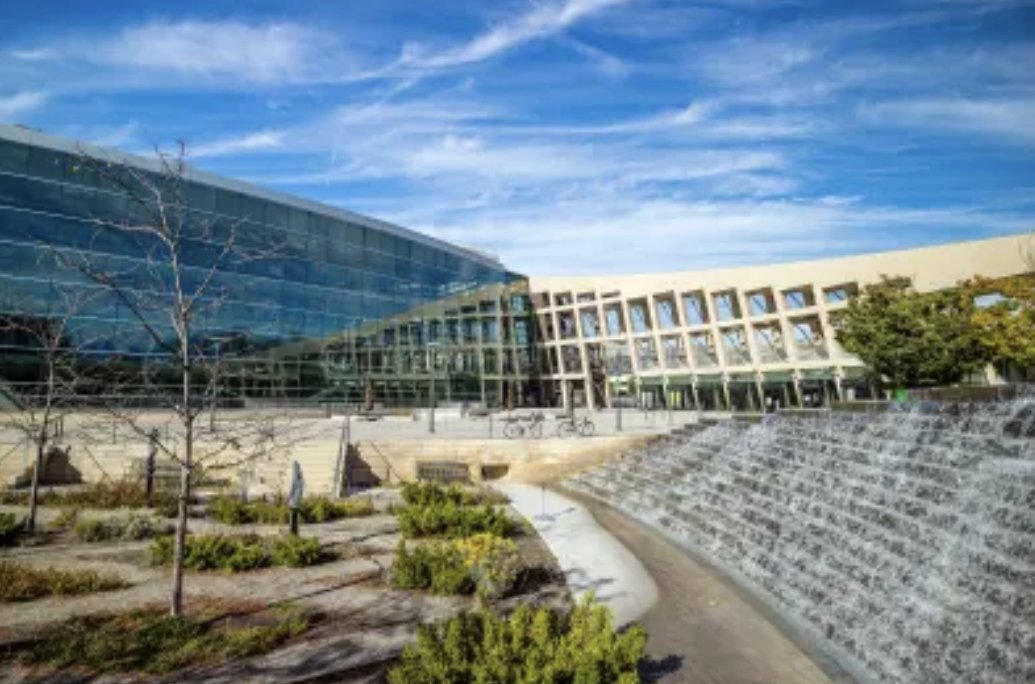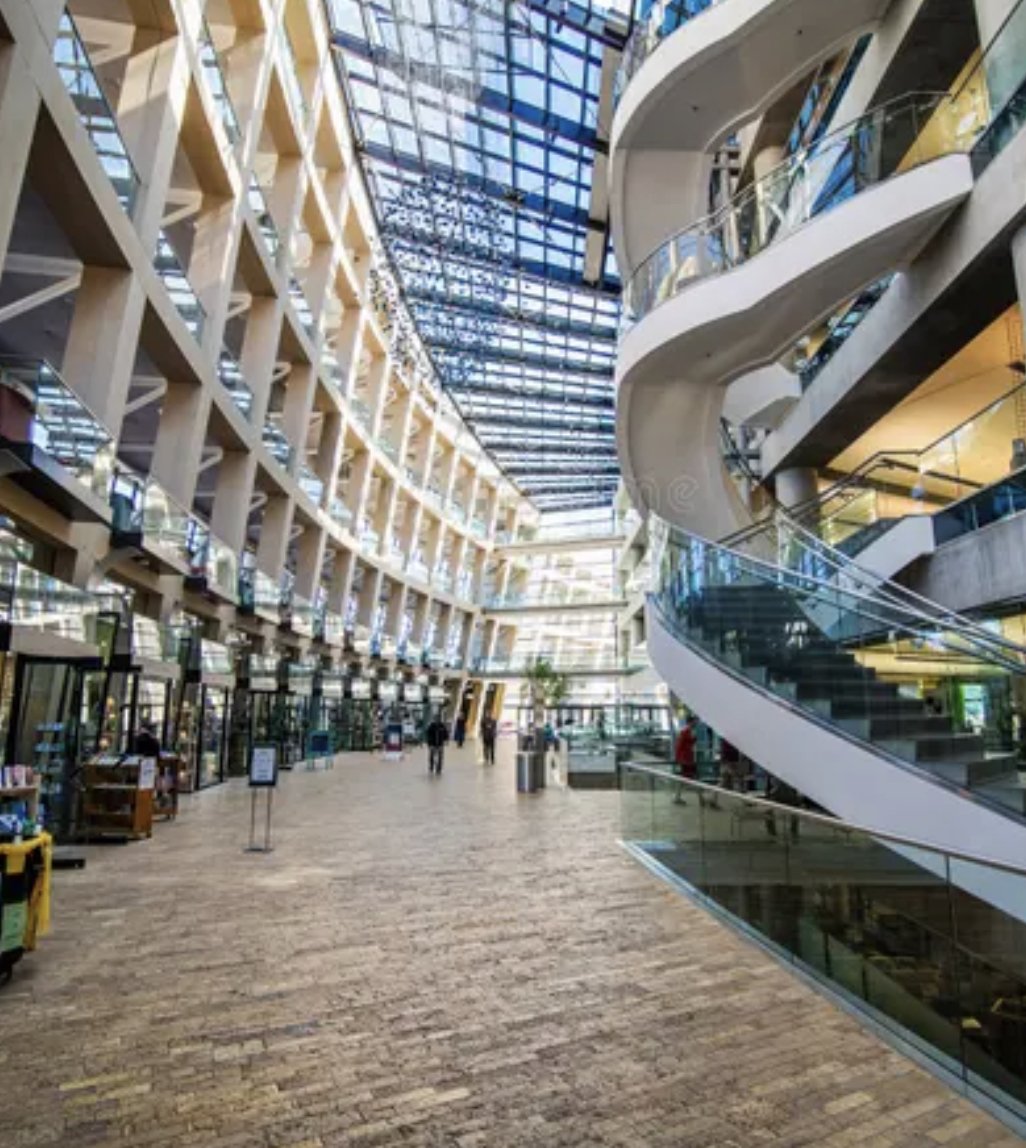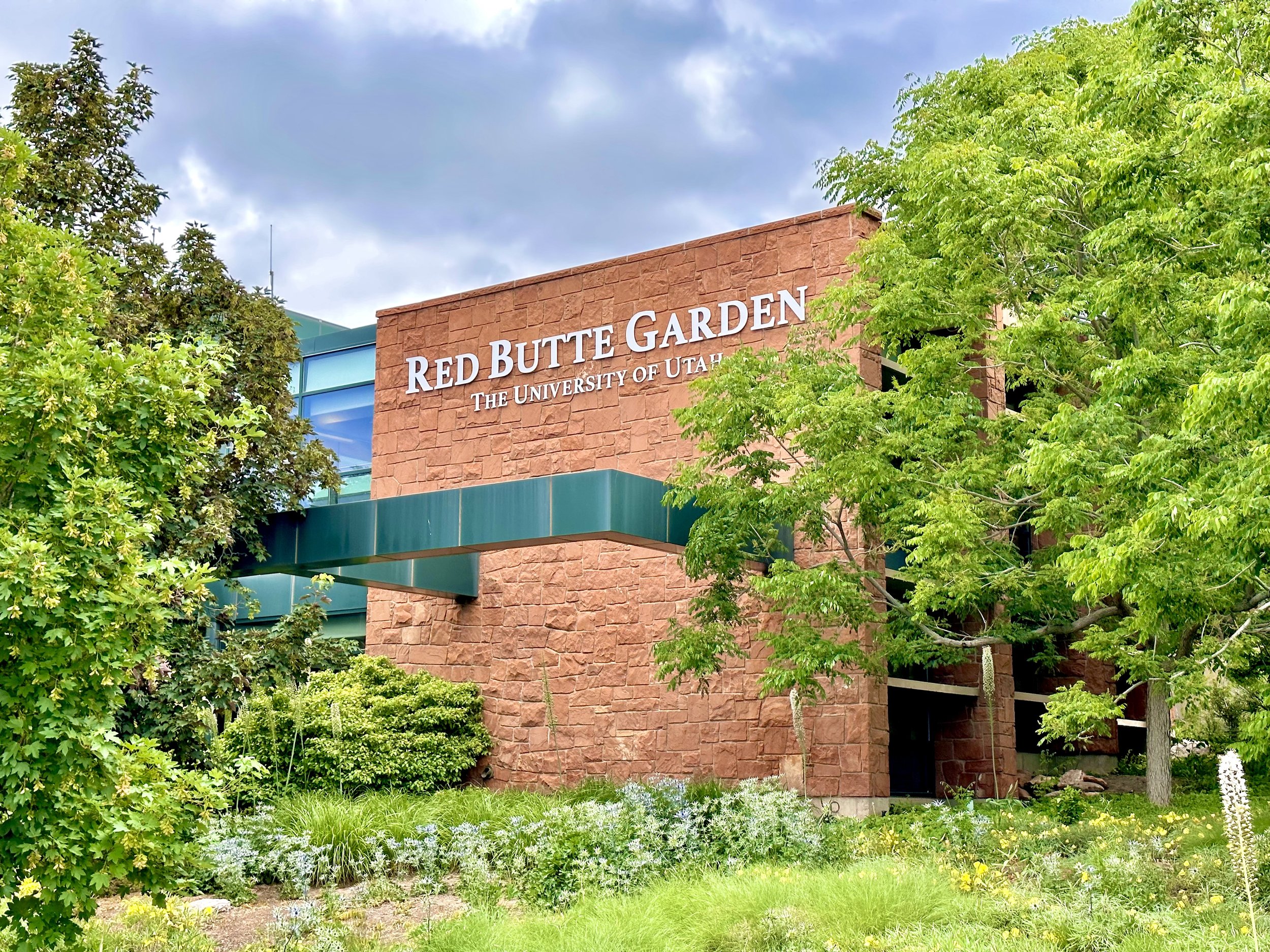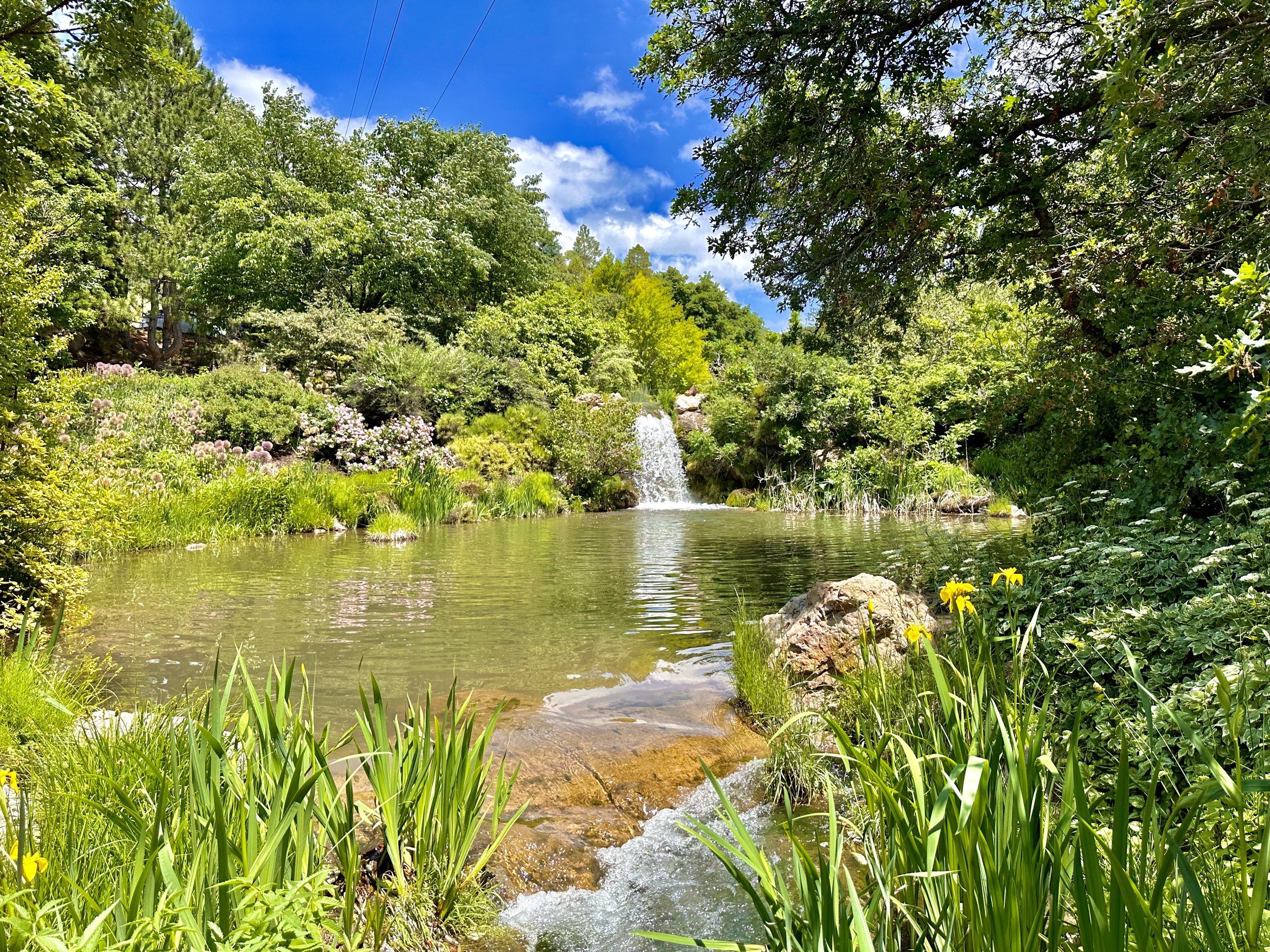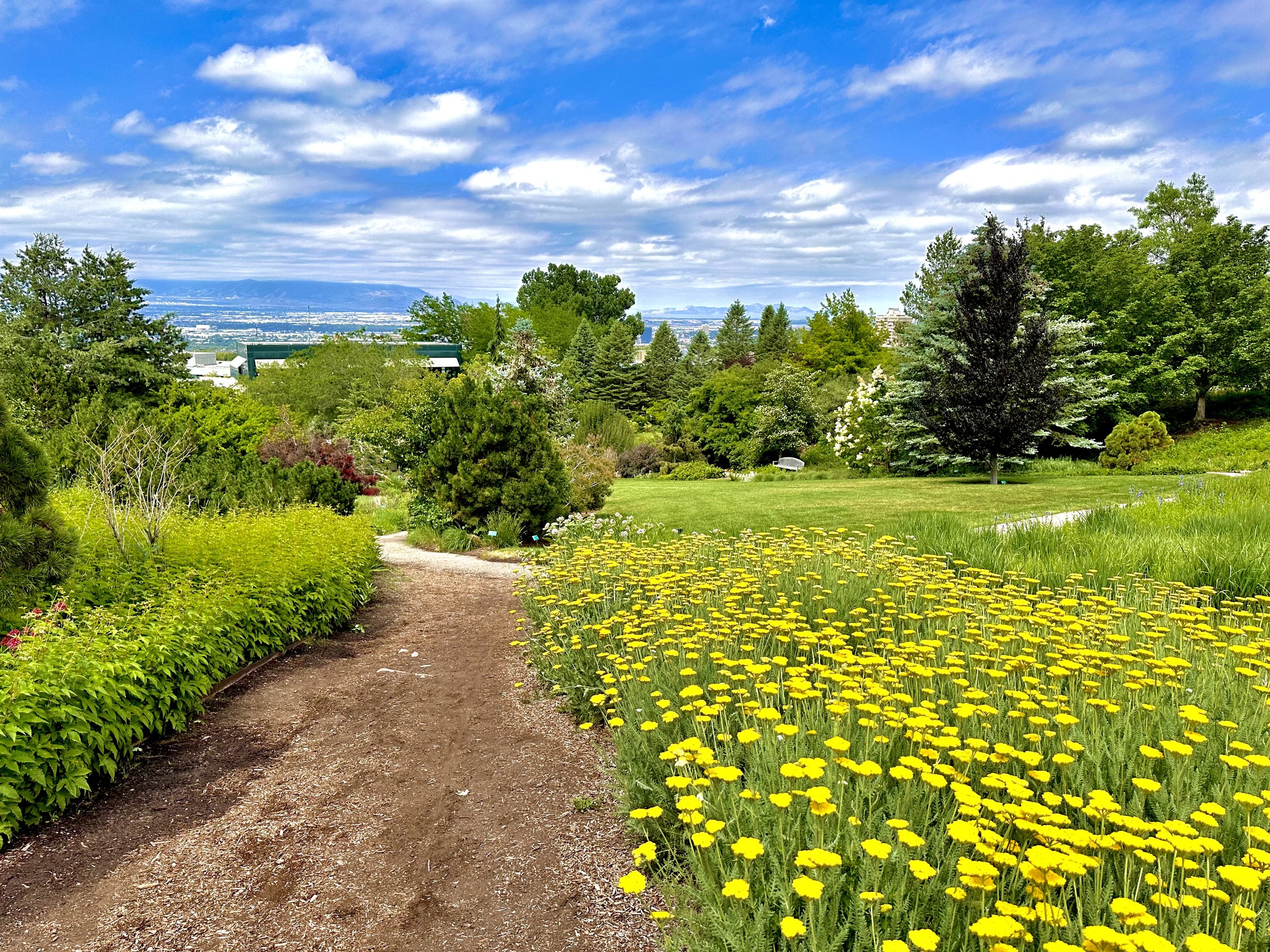Unveiling the Remarkable History and Architectural Splendor of the Salt Lake City and County Building: A Must-Visit Destination on Salt Lake City Tours
Welcome to Salt Lake City, a captivating destination renowned for its rich history, stunning landscapes, and remarkable architecture. One architectural gem that stands out in this vibrant cityscape is the Salt Lake City and County Building. With a fascinating history and breathtaking design, this iconic structure offers an enriching experience for visitors on their Salt Lake City tours. Let's delve into the captivating story behind this magnificent landmark.
A Historic Journey:
The Salt Lake City and County Building, also known as the City-County Building, is a historic structure that serves as the headquarters of Salt Lake City's government and houses several government offices. The construction of this magnificent edifice began in 1890 and was completed in 1894, making it over a century old.
Architectural Marvel:
Designed by prominent architect Richard K.A. Kletting, the Salt Lake City and County Building is a true masterpiece of architectural grandeur. The structure beautifully blends various architectural styles, primarily Richardsonian Romanesque and Second Empire, creating a distinctive and awe-inspiring façade.
At the heart of the building's design is a central clock tower rising to a height of 256 feet, dominating the city skyline. This majestic tower features intricate stone carvings, ornamental details, and a magnificent copper dome, creating a striking visual appeal.
Exploring the Building:
Visitors embarking on Salt Lake City tours will find the Salt Lake City and County Building to be an architectural marvel worth exploring. Step inside, and you'll be greeted by an array of grand hallways, elegant staircases, and spacious chambers adorned with beautiful artwork and historic artifacts.
One of the most notable features within the building is the City Council Chambers, characterized by its opulent decor, towering ceilings, and stained glass windows. The Council Chambers serve as a venue for public meetings and host numerous significant events, contributing to the building's vibrant atmosphere.
Preserving History:
Beyond its architectural grandeur, the Salt Lake City and County Building holds a wealth of historical significance. The building played a pivotal role in the city's development, witnessing the growth and transformation of Salt Lake City over the years.
The Salt Lake City and County Building is a testament to the city's enduring heritage, with efforts taken to preserve and maintain its historic integrity. Renovations and restoration projects have been carried out to ensure the building remains a cherished landmark for generations to come.
When planning your Salt Lake City tours, be sure to include a visit to the iconic Salt Lake City and County Building. This architectural marvel not only captivates visitors with its remarkable design but also offers a glimpse into the city's storied past. From its awe-inspiring clock tower to its richly decorated interiors, every corner of this historic landmark exudes charm and grandeur. Immerse yourself in the architectural and historical treasures of Salt Lake City by exploring this magnificent building, an unforgettable highlight of your Salt Lake City experience.
See the historic sites and hear the famous stories on a Salt Lake City sightseeing bus or trolley guided tour. Click a link below for details:
Salt Lake City Public Library: A Tourist's Guide to a Utah Architectural Marvel
When exploring the vibrant city of Salt Lake City, one architectural gem that should not be missed is the Salt Lake City Public Library. Renowned for its remarkable design and captivating features, this library has become a must-visit attraction for tourists and architecture enthusiasts alike. In this article, we will delve into the rich history and awe-inspiring architecture of the Salt Lake City Public Library, offering insights that will enhance your Salt Lake City tour experience.
A Glimpse into History:
The Salt Lake City Public Library, designed by the acclaimed architectural firm Moshe Safdie and Associates, opened its doors in 2003. The library was the outcome of a design competition that sought to create an iconic structure to serve as a cultural and educational hub for the community. With its visionary design, it has since become an architectural landmark that represents the spirit of Salt Lake City.
Architectural Brilliance:
The library's design is a testament to Moshe Safdie's ingenuity and artistic vision. The building features a striking glass facade that allows natural light to flood the interior, creating a warm and inviting atmosphere. The curvilinear lines and cascading levels of the library blend harmoniously with the surrounding landscape, seamlessly integrating nature with modern architecture.
Aesthetic Delights:
As you explore the library, prepare to be mesmerized by its breathtaking features. The rooftop garden, aptly named the Urban Room, offers panoramic views of the city and serves as a peaceful retreat for visitors. The innovative use of open spaces and art installations throughout the library adds an element of whimsy and artistic expression to the overall experience.
Functional Spaces:
Beyond its architectural beauty, the Salt Lake City Public Library boasts functional spaces that cater to diverse needs. The library houses a vast collection of books, periodicals, and multimedia resources, providing an enriching environment for learning and research. Additionally, it offers various reading rooms, study areas, and meeting spaces, catering to the needs of students, professionals, and community members alike.
Exploring Salt Lake City:
While visiting the Salt Lake City Public Library, take the opportunity to explore the surrounding areas. The library is situated in the vibrant downtown district, which offers a plethora of attractions, dining options, and shopping experiences. Nearby landmarks include the Utah State Capitol, Temple Square, and the Clark Planetarium, each showcasing a unique aspect of Salt Lake City's rich heritage and culture.
In the heart of Salt Lake City, the Salt Lake City Public Library stands as a testament to architectural brilliance and innovation. Its striking design, functional spaces, and captivating features make it an essential stop for those embarking on Salt Lake City tours. Whether you are an architecture enthusiast, a book lover, or simply seeking a serene haven in the bustling city, the Salt Lake City Public Library is a must-visit destination that will leave you in awe of its splendor. Plan your tour today and immerse yourself in the beauty of this architectural marvel.
See the historic sites and hear the famous stories on a Salt Lake City sightseeing bus or trolley guided tour. Click a link below for details:
Bear Lake in Utah: Exploring the Perfect Side Trip for Salt Lake City Sightseeing Visitors
Nestled in the breathtaking Rocky Mountains of Utah, Bear Lake is an idyllic summer destination that offers a picturesque retreat for travelers seeking both natural beauty and thrilling adventures. Located within a few hours' drive from Salt Lake City, Bear Lake serves as an excellent addition to your Salt Lake City sightseeing tour itinerary. In this article, we'll delve into the charms of Bear Lake, highlighting its stunning landscapes, exciting outdoor activities, and how it can enhance your overall experience while exploring the sights and sounds of Salt Lake City.
1. Spectacular Natural Beauty:
Bear Lake, often referred to as the "Caribbean of the Rockies," is renowned for its mesmerizing turquoise-blue waters. Its serene ambiance, surrounded by lush forests and majestic peaks, creates a paradise-like setting that captivates visitors from the moment they arrive. The lake's stunning beauty and tranquil atmosphere provide a perfect escape from the city's hustle and bustle, making it an ideal stop during your Salt Lake City sightseeing tour.
2. Water Activities Galore:
Bear Lake offers an abundance of water-based activities that cater to all types of visitors. Whether you're seeking relaxation or adrenaline-pumping adventures, the lake has it all. Engage in swimming, paddleboarding, kayaking, or simply basking in the sun on one of the lake's sandy beaches. For those seeking more excitement, jet skiing, boating, and fishing are popular options that will satisfy your thirst for adventure.
3. Outdoor Recreation and Scenic Hikes:
While the lake steals the show, Bear Lake is also surrounded by breathtaking wilderness, offering ample opportunities for outdoor enthusiasts. Hiking enthusiasts can explore the nearby Cache National Forest, which boasts a network of trails suitable for various skill levels. Take a leisurely stroll along the Limber Pine Nature Trail or challenge yourself with the more rugged paths in the Mount Naomi Wilderness area. The panoramic vistas of the surrounding mountains and verdant valleys make every step a delight.
4. Raspberry Days Festival:
If you happen to visit Bear Lake in August, don't miss the annual Raspberry Days Festival. Celebrating the region's rich agricultural heritage, this delightful event offers a taste of locally grown raspberries, delicious treats, live entertainment, parades, and a vibrant carnival atmosphere. The festival provides a wonderful opportunity to immerse yourself in the local culture, interact with friendly locals, and create lasting memories.
5. Gateway to Salt Lake City:
Bear Lake's proximity to Salt Lake City makes it an excellent addition to your Salt Lake City sightseeing tour. After immersing yourself in the natural wonders of Bear Lake, you can easily return to the city and continue exploring its iconic landmarks, such as the Utah State Capitol, Temple Square, or the fascinating exhibits at the Natural History Museum of Utah. The combination of Bear Lake's tranquility and Salt Lake City's urban vibrancy creates a well-rounded experience for travelers.
A visit to Bear Lake, Utah, is a must for anyone embarking on a Salt Lake City sightseeing tour. Its stunning natural beauty, thrilling water activities, scenic hikes, and cultural festivals offer a unique and enriching experience. Whether you seek relaxation, adventure, or a blend of both, Bear Lake is sure to leave a lasting impression. So, plan your trip, immerse yourself in the beauty of Bear Lake, and create unforgettable memories that will enhance your overall Salt Lake City exploration.
See the historic sites and hear the famous stories on a Salt Lake City sightseeing bus or trolley guided tour. Click a link below for details:
Exploring the Magic of Hollywood: Utah's Captivating Film Locations
From picturesque landscapes to stunning vistas, the diverse and breathtaking scenery of Utah has captured the imagination of filmmakers for decades. While Hollywood is synonymous with glitz and glamour, numerous movies have been filmed in Utah, showcasing its natural beauty and unique charm. In this article, we will take a captivating journey through some notable Hollywood movies that chose Utah as their backdrop, adding a touch of magic to the silver screen.
1. "Thelma & Louise" (1991):
Ridley Scott's iconic road trip film, "Thelma & Louise," took full advantage of Utah's awe-inspiring landscapes. The state's striking red rock formations, particularly those found in Arches National Park and Canyonlands National Park, provided the perfect setting for the thrilling and emotional journey of the film's two protagonists.
2. "127 Hours" (2010):
Directed by Danny Boyle, "127 Hours" recounts the harrowing true story of mountaineer Aron Ralston. Filmed primarily in Utah's Bluejohn Canyon and Little Wild Horse Canyon, the rugged and isolated landscapes beautifully portrayed the treacherous yet awe-inspiring nature that Ralston encountered during his ordeal.
3. "Butch Cassidy and the Sundance Kid" (1969):
This classic Western film starring Paul Newman and Robert Redford made excellent use of Utah's scenic wonders. From Zion National Park to the iconic rock formations of the Monument Valley Navajo Tribal Park, Utah's landscapes became an integral part of the film, adding a sense of authenticity to the Old West tale.
4. "127 Hours" (2010):
Directed by Danny Boyle, "127 Hours" recounts the harrowing true story of mountaineer Aron Ralston. Filmed primarily in Utah's Bluejohn Canyon and Little Wild Horse Canyon, the rugged and isolated landscapes beautifully portrayed the treacherous yet awe-inspiring nature that Ralston encountered during his ordeal.
5. "Indiana Jones and the Last Crusade" (1989):
Utah's deserts and canyons served as the backdrop for some memorable scenes in the Indiana Jones series. In "The Last Crusade," iconic locations like the striking red rock formations of the Arches National Park and the sandstone cliffs of Dead Horse Point State Park added a sense of adventure and intrigue to the film.
6. "127 Hours" (2010):
Directed by Danny Boyle, "127 Hours" recounts the harrowing true story of mountaineer Aron Ralston. Filmed primarily in Utah's Bluejohn Canyon and Little Wild Horse Canyon, the rugged and isolated landscapes beautifully portrayed the treacherous yet awe-inspiring nature that Ralston encountered during his ordeal.
Utah's breathtaking landscapes have played a remarkable role in some of Hollywood's most memorable movies. From the adventurous tales of Indiana Jones to the emotional journeys of "Thelma & Louise" and "127 Hours," these films have showcased Utah's natural beauty to audiences worldwide. By embracing Utah's unique geography, filmmakers have created captivating stories that would not be the same without the state's striking canyons, majestic national parks, and awe-inspiring rock formations. The enduring relationship between Hollywood and Utah continues to captivate audiences and inspire future generations of filmmakers to explore the magic that lies within the state's remarkable film locations.
See the historic sites and hear the famous stories on a Salt Lake City sightseeing bus or trolley guided tour. Click a link below for details:
A Glimpse of the History of the Bingham Canyon Utah Copper Mine
The Bingham Canyon copper mine, located in Utah, has a rich and fascinating history. It is one of the largest open-pit mines in the world and has played a significant role in the development of the mining industry in the United States.
The story of the Bingham Canyon mine dates back to the mid-19th century when gold and silver deposits were discovered in the Oquirrh Mountains. However, it was the discovery of copper in 1863 that truly transformed the region. Two prospectors, Sanford and Thomas Bingham, stumbled upon the rich copper deposits that would eventually bear their name.
The initial mining operations in Bingham Canyon were relatively small-scale and faced numerous challenges. However, the arrival of the railroad in the late 19th century provided the means to transport the copper ore to smelters more efficiently. This development spurred the growth of the mine, and by the early 20th century, the Bingham Canyon mine became a significant producer of copper.
Over the years, technological advancements and innovations greatly improved the efficiency of mining operations at Bingham Canyon. The introduction of large-scale mechanized equipment and modern mining techniques helped increase productivity and extraction rates.
In 1906, the mine witnessed a major disaster when a massive landslide, known as the "Great Utah Copper Mine landslide," occurred. It resulted in the loss of many lives and caused significant damage to the infrastructure. Despite this setback, the mine recovered and continued to expand its operations.
The Bingham Canyon mine experienced fluctuations in production due to various factors, including changes in copper prices and global demand. However, it remained a vital contributor to the local economy and the overall copper industry in the United States.
In recent times, the Bingham Canyon mine has undergone significant modernization efforts. In 1992, it was acquired by Kennecott Utah Copper Corporation, a subsidiary of Rio Tinto Group. The company invested heavily in technological advancements, such as the implementation of autonomous haulage systems, to improve safety and productivity.
Today, the Bingham Canyon mine is an impressive sight, with its enormous open pit stretching over 2.5 miles wide and nearly a mile deep. It continues to be a major copper producer, contributing to the supply of this essential metal in various industries, including construction, electronics, and transportation.
The history of the Bingham Canyon mine reflects the enduring spirit of mining and its impact on local communities and economies. Its legacy as one of the largest copper mines in the world and a symbol of Utah's mining heritage remains significant.
Touring the Natural Wonderland: Red Butte Garden in Salt Lake City
Welcome to the scenic oasis of Red Butte Garden, nestled in the heart of Salt Lake City, Utah. This botanical garden and arboretum is a true gem that will captivate nature lovers and adventure seekers alike. Join me on a virtual tour as we uncover the beauty and tranquility of Red Butte Garden.
1. A Feast for the Senses:
As you step into Red Butte Garden, prepare to be enveloped by a world of vibrant colors, fragrant blooms, and melodic bird songs. The garden spans over 100 acres, offering a diverse range of flora and fauna. Marvel at the carefully manicured gardens showcasing an array of flowers, from brilliant tulips to delicate roses, creating a kaleidoscope of hues.
2. Nature's Masterpiece: The Natural Area:
Beyond the cultivated gardens lies the Natural Area, where the wilderness takes center stage. Hike along the numerous trails that wind through the picturesque foothills of the Wasatch Mountains. The scent of pine fills the air as you encounter native wildlife and discover breathtaking vistas overlooking the Salt Lake Valley. This is an outdoor enthusiast's paradise.
3. Musical Delights: Red Butte Garden Amphitheatre:
Red Butte Garden is not just a haven for nature enthusiasts; it's also a cultural hub. The renowned Red Butte Garden Amphitheatre hosts a variety of concerts throughout the year, attracting acclaimed artists and performers. Imagine enjoying an evening under the stars, surrounded by lush greenery, while being serenaded by your favorite musicians. It's an experience like no other.
4. A Journey Through Time: Orangerie and Fragrance Garden:
Step into history as you explore the Orangerie and Fragrance Garden. This beautiful glass structure houses a variety of citrus trees, transporting you to a bygone era. Breathe in the delightful scents of blossoming flowers in the adjacent Fragrance Garden, where aromatic herbs and plants create an olfactory symphony.
5. Engaging Learning Experiences:
Red Butte Garden is committed to environmental education and offers a wide range of interactive programs for all ages. From guided tours and workshops to summer camps and lectures, there is something for everyone to expand their knowledge and appreciation for the natural world. Engage with expert botanists and learn about conservation efforts while immersing yourself in the garden's splendor.
Red Butte Garden in Salt Lake City is a captivating destination that harmonizes nature, culture, and education. Whether you're seeking a serene escape, a musical adventure, or an enriching learning experience, this botanical wonderland has it all. Plan your visit to Red Butte Garden and embark on a journey of beauty, tranquility, and inspiration.
Discovering the History of the Joseph Smith Memorial Building in Salt Lake City
Located in the heart of downtown Salt Lake City, the Joseph Smith Memorial Building stands tall as a testament to the rich history of The Church of Jesus Christ of Latter-day Saints (LDS Church) and its founder, Joseph Smith. This iconic structure, originally known as the Hotel Utah, has undergone a remarkable transformation over the years, from a luxurious hotel to a center of religious and cultural significance. In the post we take a peek into the captivating history of the Joseph Smith Memorial Building and its enduring legacy.
Hotel Utah: A Beacon of Elegance
The story of the Joseph Smith Memorial Building begins in the early 20th century when the Church embarked on an ambitious project to create a grand hotel that would rival the finest establishments across the country. Completed in 1911, the Hotel Utah quickly gained a reputation for its opulence, exquisite architecture, and unrivaled hospitality. It served as a symbol of Utah's emergence as a cosmopolitan center, attracting visitors from all walks of life.
The Changing Landscape: From Hotel to Church Headquarters
As the years passed, the Church recognized the potential of the Hotel Utah as a central hub for its administrative and ecclesiastical operations. In 1978, the building underwent extensive renovations, transforming it into the Church Administration Building. The structure was later rededicated as the Joseph Smith Memorial Building in 1993, commemorating the prophet who played a pivotal role in the establishment of the LDS Church.
Preservation of Architectural Splendor
Despite the changes it underwent, the Joseph Smith Memorial Building retained its original neoclassical design and architectural grandeur. The façade, with its stunning Ionic columns, intricate cornices, and ornate detailing, remains an exquisite example of Beaux-Arts architecture. Visitors today can still appreciate the timeless elegance of the building as they explore its various spaces.
A Multifaceted Center: Serving the Community
The Joseph Smith Memorial Building has evolved into a multifaceted center that serves the community in numerous ways. It houses a variety of facilities, including banquet halls, restaurants, a theater, and exhibition spaces. These venues are not only used for religious gatherings and events but also host cultural performances, concerts, and public functions, fostering a sense of unity and connectivity.
The Legacy Lives On
The Joseph Smith Memorial Building is more than just a physical structure; it symbolizes the enduring legacy of Joseph Smith and the LDS Church. As visitors walk through its halls, they are immersed in a rich tapestry of history, faith, and cultural heritage. The building stands as a beacon of the Church's commitment to its followers and its dedication to preserving the past while embracing the future.
The Joseph Smith Memorial Building in Salt Lake City stands as a testament to the remarkable history and cultural significance of The Church of Jesus Christ of Latter-day Saints. From its origins as the grand Hotel Utah to its present-day role as a center for community engagement, this iconic structure has witnessed the passage of time while retaining its architectural splendor. As visitors explore its halls, they are enveloped in the legacy of Joseph Smith and the enduring values upheld by the LDS Church. The Joseph Smith Memorial Building remains an emblem of the Church's commitment to its heritage and its mission to inspire and unite people from all walks of life.
See the historic sites and hear the famous stories on a Salt Lake City sightseeing bus or trolley guided tour. Click a link below for details:
Exploring the Beauty and Charm of Thanksgiving Point in Lehi, Utah
Thanksgiving Point is a community-owned nonprofit garden, museum, and farm complex founded as a gathering place and gift to the community. It serves over 2 million guests annually at its venues and through a mix of programs, including signature experiences, educational offerings, catered events, dining, and entertainment. Founded by Alan and Karen Ashton in 1995 and named "Thanksgiving Point to express their gratitude to the community.
Home to five major cultural venues:
Ashton Gardens: Featuring 50-acres of stately gardens, grand lawns, and the largest manmade waterfall in America, the Ashton Gardens connects all who visit with the wonders of nature
Mountain America Museum of Ancient Life: Discover life from over 65 million years ago in the Mountain America Museum of Ancient Life, housing one of the largest collections of mounted dinosaurs in the world
o Butterfly Biosphere: Learn from and interact with thousands of live butterflies and insects from around the world in this insectarium and conservatoryFarm Country: Milk a cow, ride a pony, and meet dozens of other farm animals at Farm Country, a real working farm in the heart of Utah's metropolitan area
Museum of Natural Curiosity: Over 400 interactive, family-friendly, and fun exhibits engage audiences of all ages in explorative play
Thanksgiving Point is a captivating destination a 30 minute drive south of Salt Lake City in the heart of Lehi, Utah. With its enchanting gardens, intriguing museums, and thrilling activities, this place offers a perfect blend of natural beauty and cultural experiences. Join us as we embark on a journey to discover the wonders of Thanksgiving Point.
1. Lush Gardens and Nature:
Thanksgiving Point is renowned for its breathtaking gardens, showcasing a myriad of vibrant colors and fragrant blooms. Begin your exploration at the Ashton Gardens, an expansive 55-acre space brimming with awe-inspiring landscapes and themed gardens. Stroll along the meandering pathways, unwind in tranquil settings, and witness the mesmerizing beauty of thousands of flowers. Don't miss the whimsical Butterfly Biosphere, where you can immerse yourself in a world of fluttering butterflies from around the globe.
2. Educational and Entertaining Museums:
Immerse yourself in knowledge and wonder at Thanksgiving Point's remarkable museums. The Museum of Natural Curiosity is a haven for families, featuring interactive exhibits that engage visitors of all ages. Unleash your creativity in the Art Studio, embark on scientific adventures in the Rainforest, and marvel at the wonders of paleontology in the Discovery Garden.
For history enthusiasts, the Museum of Ancient Life presents an incredible display of dinosaur fossils, including a vast collection of complete skeletons. Walk through prehistoric landscapes, come face-to-face with towering giants, and learn about the fascinating history of these ancient creatures.
3. Outdoor Adventures:
Thanksgiving Point is not just about gardens and museums; it also offers exciting outdoor activities for those seeking adventure. Visit the Farm Country, a working farm where you can interact with farm animals, enjoy tractor-drawn wagon rides, and experience the joys of rural life. Take a leisurely walk through the Farm Country Market, which offers fresh produce, local crafts, and delectable treats.
If you're up for more thrills, head to the Thanksgiving Point Golf Course, an 18-hole championship golf course designed to challenge golfers of all levels. With its stunning vistas of the Wasatch Mountains and meticulously maintained fairways, this course promises an unforgettable golfing experience.
4. Dining and Shopping Delights:
No trip is complete without indulging in delightful culinary experiences and exploring unique shopping opportunities. Thanksgiving Point hosts a variety of dining options, ranging from casual cafes to elegant restaurants, where you can savor delicious local cuisine and satisfy your taste buds.
Additionally, you'll find an array of shops and boutiques offering a treasure trove of souvenirs, artisan crafts, and one-of-a-kind items. Take a piece of Thanksgiving Point home with you as a memento of your visit.
Thanksgiving Point in Lehi, Utah, is a captivating destination that seamlessly blends natural beauty, educational experiences, and outdoor adventures. From its enchanting gardens and fascinating museums to its thrilling outdoor activities, this place has something to offer every traveler. Whether you're seeking tranquility, knowledge, or adventure, Thanksgiving Point will undoubtedly leave a lasting impression on your heart. Plan your visit and let the magic of this remarkable destination unfold before your eyes.
A Journey through the History of the Mormon Tabernacle Choir
The Mormon Tabernacle Choir stands as a symbol of musical excellence, captivating audiences with their mesmerizing harmonies and inspiring performances. Rooted in a rich history and deep devotion, this renowned choir has become an enduring cultural institution, blending music and faith to create a legacy that spans over a century.
Formation and Early Years:
The origins of the Mormon Tabernacle Choir can be traced back to the early days of The Church of Jesus Christ of Latter-day Saints (LDS Church). In 1847, a group of pioneers settled in the Salt Lake Valley, bringing with them their love for music. The first informal singing groups were formed, which eventually evolved into the early foundations of the choir.
The turning point came in 1849 when the Church constructed the Salt Lake Tabernacle, a magnificent building renowned for its unique acoustics. The tabernacle became the home of the choir, providing the perfect venue for their performances.
Transformation and Growth:
Under the direction of notable conductors, the Mormon Tabernacle Choir continued to evolve and grow throughout the late 19th and early 20th centuries. John Parry, Ebenezer Beesley, and Evan Stephens were instrumental in shaping the choir's musical identity and elevating its reputation.
The choir's breakthrough moment arrived in 1911 when they embarked on their first national tour, captivating audiences across the United States with their angelic voices. This tour marked the beginning of the choir's global recognition and set the stage for their future international endeavors.
Broadcasting and Fame:
In the late 1920s, the Mormon Tabernacle Choir made history by becoming one of the first choirs to broadcast their performances on the radio. Their weekly radio program, "Music and the Spoken Word," quickly gained popularity and became one of the longest-running continuous network broadcasts in the world.
Throughout the 20th century, the choir collaborated with numerous renowned artists, including Bing Crosby, Ella Fitzgerald, and the Boston Pops Orchestra, expanding their musical horizons and captivating diverse audiences. Their performances at prestigious events such as presidential inaugurations and the 2002 Winter Olympics further solidified their fame and cultural significance.
Technological Advancements:
With the advent of new technologies, the Mormon Tabernacle Choir embraced innovation to reach wider audiences. In 2000, the choir launched their official website, providing access to their music and allowing fans around the world to experience their enchanting performances.
In 2010, the choir utilized social media platforms, including YouTube and Facebook, to share their music, behind-the-scenes footage, and connect with their global fanbase. This digital presence further extended their reach and showcased their timeless artistry to a new generation of listeners.
Renamed as The Tabernacle Choir at Temple Square:
In 2018, the Mormon Tabernacle Choir underwent a significant change. Following an official directive from the Church leadership, the choir was renamed as The Tabernacle Choir at Temple Square. This change aimed to align the choir's name with the central place of worship for Latter-day Saints, emphasizing their sacred mission.
The Legacy Continues:
Today, The Tabernacle Choir at Temple Square remains a symbol of artistic excellence and religious devotion. Comprised of approximately 360 members, the choir continues to delight audiences with their unparalleled choral performances and soul-stirring renditions.
Whether through their annual Christmas concerts, recordings, or international tours, The Tabernacle Choir at Temple Square carries forward a legacy that spans generations, uniting people through the universal language of music and serving as a testament to the power of faith and harmony.
The Mormon Tabernacle Choir, now known as The Tabernacle Choir at Temple Square, performs on Sunday mornings at 8:30 AM Mountain Standard Time and rehearses on Thursday evening at 5:30 PM. For more details on how to see the choir perform in person visit this link: Tabernacle Choir Tour
The Salt Lake Tabernacle
The Salt Lake Tabernacle is an iconic building located at Temple Square in Utah, United States. Here's a brief history of the Tabernacle and some tips for visiting:
The construction of the Salt Lake Tabernacle began in 1863 and was completed in 1875 under the direction of Brigham Young, the second president of The Church of Jesus Christ of Latter-day Saints. The building's unique design was the result of the collaboration between architect Truman O. Angell and engineer Henry Grow.
The Tabernacle is renowned for its architectural marvel, particularly its massive oval-shaped roof. The impressive roof, spanning 250 feet without any interior pillars, was a remarkable engineering feat at the time. The building's exterior features a mix of Gothic and Greek Revival styles.
One of the most striking features of the Tabernacle is its interior acoustics. The building can seat around 7,000 people, and despite its large size, even a pin drop can be heard from the pulpit due to the unique shape and construction materials.
In addition to hosting religious gatherings and conferences, the Salt Lake Tabernacle is also home to the world-famous Tabernacle Choir at Temple Square, formerly known as the Mormon Tabernacle Choir. The choir's weekly broadcasts, known as the "Music and the Spoken Word" program, have been running since 1929.
If you're planning to visit the Salt Lake Tabernacle, here are a few tips:
1. Timing: Check the schedule to see if there are any events or performances happening during your visit. Attending a choir rehearsal or a concert can enhance your experience.
2. Guided Tours: Take advantage of the free guided tours available at Temple Square. the Church’s missionary tour guides can provide insights into the Tabernacle's history, architecture, and its significance to the community.
3. Acoustical demonstration: While inside the Tabernacle, listen to the unique acoustics by dropping a pin or tearing a piece of paper. It's an intriguing experience to witness sound travel effortlessly throughout the space.
4. Explore Temple Square: Don't miss the opportunity to explore the rest of Temple Square, which includes other notable landmarks such as the Salt Lake Temple, the Assembly Hall, and various statues and gardens.
5. Visitor Centers: Visit the nearby visitor centers, such as the Joseph Smith Memorial Building or the Church History Museum, where you can learn more about the history and teachings of The Church of Jesus Christ of Latter-day Saints.
Remember to be respectful during your visit, as the Salt Lake Tabernacle and Temple Square hold significant religious importance to members of the faith. Enjoy your time exploring this historic and culturally significant site!
To visit the Tabernacle for an organ recital on a sightseeing tour, visit this link: Salt Lake City Tour + Organ Recital
